PRIME program: new unmanned boats for the Pentagon
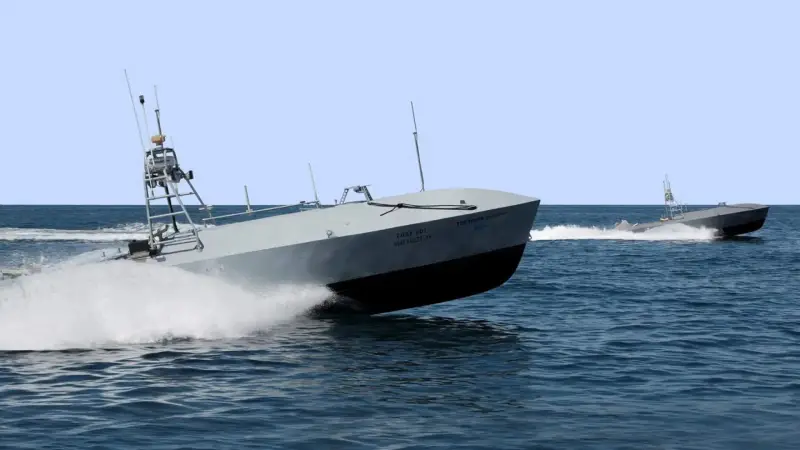
Uncrewed CUSV boats undergoing testing. Photo by Textron
Various Pentagon structures and its contractors are developing the direction of unmanned boats. Another program of this kind called PRIME is starting right now. Its goal is to find a new successful boat design and control system for it with a high degree of autonomy and wide possibilities for group use. For now we are only talking about accepting applications, but in the foreseeable future the program should reach practical tests.
Information request
The Pentagon's Defense Innovation Unit (DIU) recently launched the PRIME (Production-Ready, Inexpensive, Maritime Expeditionary) research and development program. Its goal is to create and select a new uncrewed boat for the navy.
DIU plans to accept applications from future program participants and take other appropriate measures in the near future. The deadline has been set as February 12. In the future, technical proposals will reach full-fledged design, as well as construction and testing of full-fledged prototypes. Based on the results of the competition, it is planned to select the best project and the most useful solutions for further development.
When launching the program, DIU published terms of reference. It lists the main functions of the future unmanned boat, defines its operational, technical and performance characteristics, etc. At the same time, the customer strictly determines only part of the boat’s parameters, while the remaining characteristics can be determined by project developers in accordance with their views on the project.
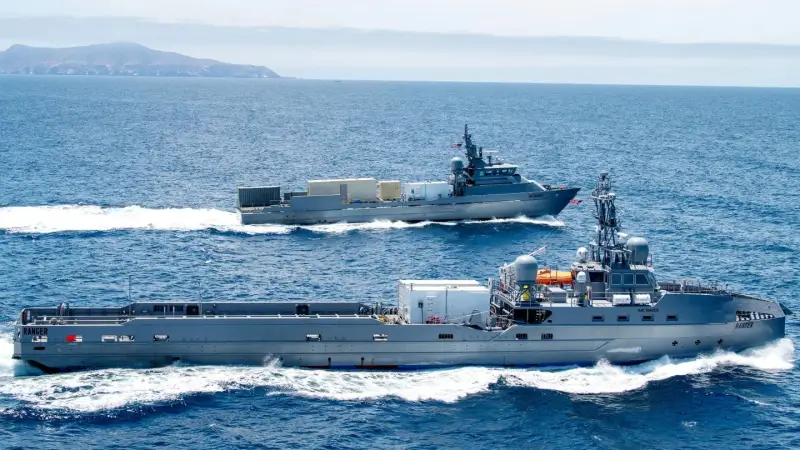
Experienced unmanned vessels of the Ghost Fleet Overlord program. Photo by US Department of Defense
The requirements for the PRIME boat are divided into three main groups, according to the degree of importance for the customer. All competition participants are required to fulfill the requirements of the first group, while the second and third are advisory in nature. At the same time, fulfilling all the requirements will make it possible to create a more efficient BEC and gain an advantage over existing or expected equipment of this class.
Customer wishes
Among the mandatory requirements, the first is the production potential of the project. The future contractor must be able to start production of boats in the spring of 2025 and build at least 10 products per month. Accordingly, annual production should reach or exceed 120 boats. At the competitive stage, the program participant must demonstrate the possibility of such production - demonstrate capacity and cooperation with other enterprises.
DIU does not specify the dimensions and displacement of a promising BEC; they must be determined by the developer taking into account other features of his project. However, the requirements contain other characteristics. Thus, the payload of the boat must exceed 1000 pounds (approx. 450 kg). The boat must use a powerful but economical diesel engine. The maximum speed is set at 35 knots, the cruising range is up to 500-1000 nautical miles. It is necessary to ensure the possibility of a long stay in one area with the solution of all problems.
The BEC must be able to operate completely autonomously. It is required to ensure independent navigation along a given route, incl. with independent avoidance of various obstacles, avoiding collisions, etc. It is necessary to ensure the ability to drive in any conditions, for example, in the absence of satellite navigation signals or in areas of active shipping.
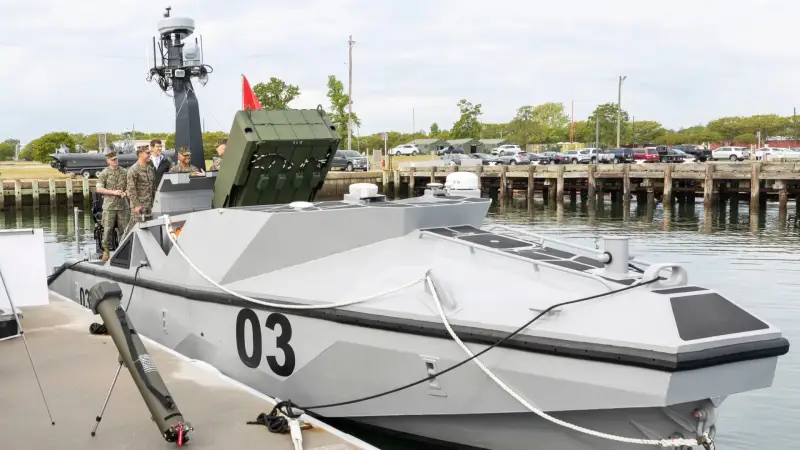
Experienced BEC LRUSV with reconnaissance and strike assets. Photo by US Department of Defense
The hardware and software of the future BEC must be flexible and be able to install additional devices or applications. Due to this modification, the boat must solve problems of a different nature, and also work for different departments.
The second group of requirements, the fulfillment of which is highly desirable but not mandatory, included the possibility of placing an unmanned aerial vehicle / devices on a boat to improve situational awareness and increase reconnaissance capabilities. DIU also wants to implement the latest communication and information transfer standards, including network-centric capabilities. Moreover, in some situations the complex must switch to radio silence mode.
An optional, but desirable function was the automatic recognition of ships and vessels by characteristic features of their appearance, including inscriptions, numbers, etc. It is desirable that the boat can carry a payload of modular architecture to solve a variety of tasks. The boat itself must be compatible with different carriers and various crane equipment, fit into standard containers, etc.
The topic of control systems was also touched upon. The remote BEC control station must have a simple and understandable interface, not impose restrictions on the operator’s work, etc. Both direct remote control and autonomous operation should be considered for different missions.
Goals and objectives
Various Pentagon structures and commercial contractors have been working on BEC for quite some time and are demonstrating noticeable success. The new PRIME program is a direct continuation of previous developments and is created on their basis. At the same time, it is immediately worked out in the context of the future re-equipment of the Navy and takes into account issues of a production and operational nature.
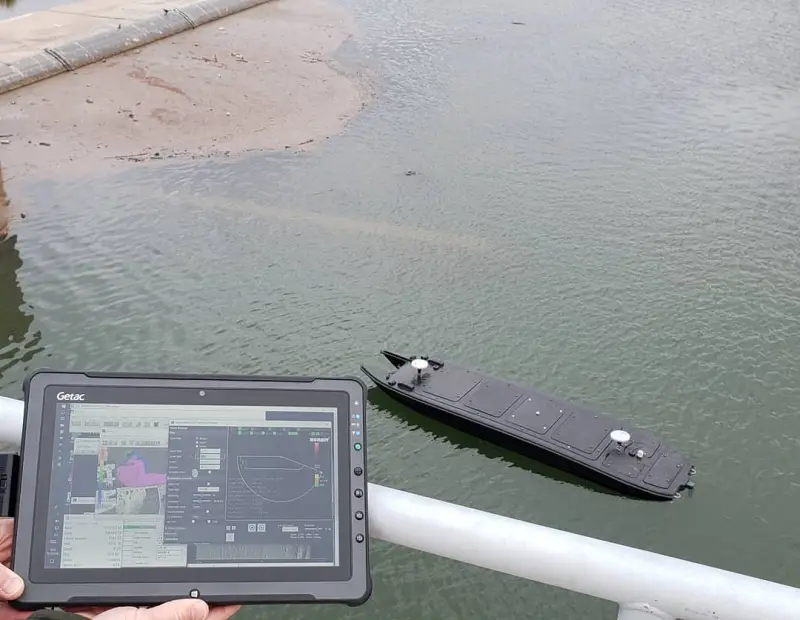
Boat MANTAS T-12 and control panel. Photo by MARTAC
The goals and objectives of PRIME are already clear. The Pentagon, represented by the DIU unit, wants to get another surface unmanned platform, and its classification in terms of dimensions and displacement remains unclear. The key requirement is the simplicity of the project, which will allow it to be developed in the shortest possible time and brought to production at a high rate.
PRIME products will have to have all the basic functions typical of modern BECs. They will be able to work under commands or independently - move along a route, conduct patrols, carry out reconnaissance or strikes, etc. At the same time, they want to pay special attention to the group use of such technology. The boats will be able to move together in an organized manner, monitor water areas, find various objects, etc. At the same time, they will exchange data with each other and with the operator to improve the efficiency of collaboration.
Apparently, it is the development of control systems with the necessary functions that is the most difficult component of the new program. However, we can expect that participants will not create them from scratch, but will use existing developments. This will allow us to solve technical problems and meet the given time frame.
DIU has not yet specified exactly what payloads the new type of unmanned boats will have to carry. They will probably be equipped with optical and radar equipment for reconnaissance and target tracking. It is also possible to install remotely controlled modules with barrel or missile weapons.
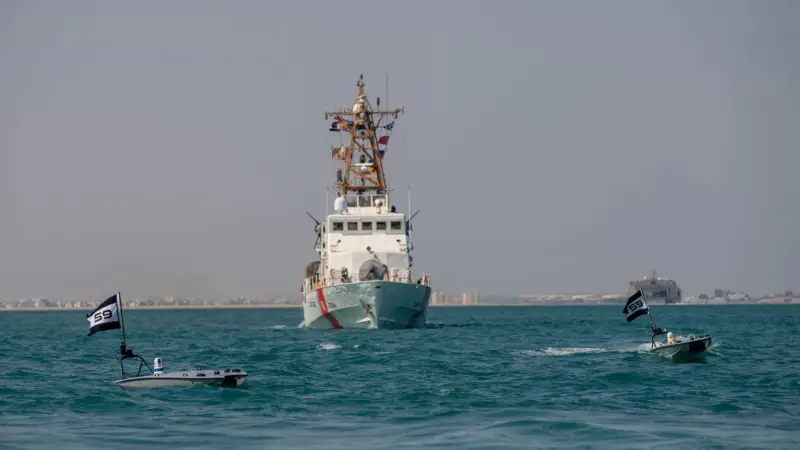
Joint maneuvering of a patrol boat and a pair of BEC. Photo by MARTAC
A carrying capacity of at least 450 kg will allow the use of a wide range of reconnaissance or weapons equipment. The development of such systems from scratch will also not be necessary - boat developers will be able to take ready-made samples that are available on the market and meet the requirements of the Navy.
The Pentagon allocates a little more than a year to develop new projects and conduct the competition. This means that experienced equipment, of one or more types, may appear over the next few months. Also during this period, the first open information about competitive developments and new information about the program as a whole will appear.
Promising direction
The Pentagon and the US military industry have long been engaged in the topic of unmanned boats with different functions and have now presented a number of similar models of various kinds. Some of these developments are still being tested, while others have already reached trial use by the troops. In the foreseeable future, it is planned to bring them to full use.
The next step in this direction, apparently, should be the new PRIME program. Like a number of previous projects, it provides for the creation of promising boats with extensive capabilities. However, this time the customer is paying increased attention to issues of future production and operation. This circumstance clearly hints at the future of the project and demonstrates the optimism of the Pentagon.
Information